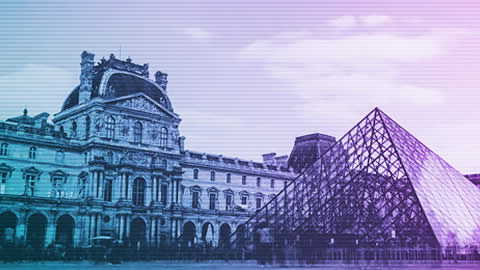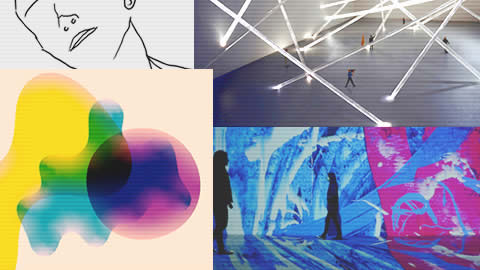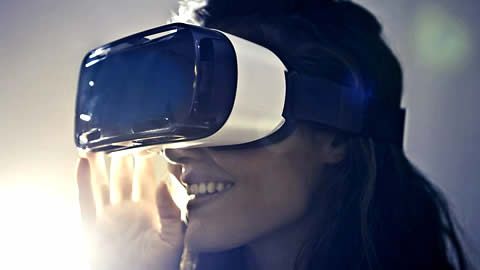Through the rapid development of digital entertainment, museums have realized the importance of interactive technologies used in their exhibitions. As a place of culture, education, and ideas the museum needs to respond to the wishes of modern audiences, which is interaction and almost mandatory multilingual communication. A growing number of museums are using apps, QR codes, touch screens, virtual and augmented reality, and many other interactive technologies that allow for easy and direct transfer of information.
Museum exhibitions enriched with digital technology are becoming a decisive factor for a growing number of visitors. For the first time, people with disabilities such as visual or hearing impairment can actively engage in this experience and personally experience the exhibits. Technology and technological innovation have broken many barriers between the museum and its audience, exhibits, and spectators.
Curiosity and interaction invite people of all ages to explore museums and galleries and then share the experience through social platforms. Digitizing the exhibit space requires collaboration between museum and technology professionals to turn the museum into a high-end virtual experience. These are some of the world's most successful examples of museums that embrace technological innovation:
Interactive museum exhibition - example:
Museum: National Museum of Singapore ›
Exhibition: Story of the Forest ›
The exhibition, Story of the Forest, has been in the permanent display of the Singapore National Museum since 2016. The concept of this exhibition has been created through two years of collaboration between museum curators and Kud Takashi of the renowned Japanese digital art collective teamLab. Once again, the collaboration of digital and museum experts has produced an exhilarating exhibition. The Story of the Forest uses selected naturalistic drawings from the collection of William Farquhar, the first British governor of the colony of Singapore. Flora and fauna drawings are animated and blended into an artificially created environment, creating a mesmerizing virtual biosphere that visitors pass through. The additional interactive experience can be gained using a mobile application that can be downloaded through the Apple App Store-a or Google Play.
Interactive museum exhibition - example:
Museum: Louvre, Paris ›
Exhibition: Mona Lisa: Beyond the Glass ›
One of the world's most famous museums, the Louvre in Paris, in October 2019 gave its visitors a virtual experience of Renaissance artist Leonardo da Vinci. The exhibition Mona Lisa: Beyond the Glass was created as part of a retrospective and commemoration of the 500th anniversary of the artist's death. Through seven minutes of virtual reality, visitors to Louvre can experience moving images, sounds and interacting with Da Vinci and even experience riding on his flying machine. The vision of this exhibition has been executed in collaboration between the museum and its curators with HTC's Vive Arts program.
Interactive museum exhibition - example:
Museum: Isabella Stewart Gardner Museum ›
Exhibition: Hacking the Heist ›
In 1990, Isabelle Stewart Gardner Museum was the target of art theft that is not solved to this date. This crime mystery is today part of the Hacking the Heist project. With the help of augmented reality (AR), museum visitors can view digital versions of paintings that have not yet been found. This ingenious project involved the audience in solving this case with the help of new interactive technologies. The museum also secured a $10 million reward for anyone who can figure out this robbery case.
Interactive museum exhibition - example:
Museum: Cleveland Museum of Art ›
Exhibition: ArtLens gallery ›
The ArtLens Gallery at the Cleveland Museum of Art is an excellent example of using several different technological innovations in their exhibitions to create an interactive digital space, from apps to video games. Visitors can place their iOS or Android device on the ArtLens Wall dock, which consists of smart screens with motion detection, eye-tracking, and a camera. In this way, smartphones access the museum's collection of high-resolution photographs as well as interactive art games.
Within the Artis Amsterdam Royal Zoo, there is a Micropia Museum dedicated to the microbes and viruses that surround us. Unofficially called the Museum of the Invisible Life, Micropia very cleverly uses interactive exhibits and microscopes and merges them with innovative multimedia presentations. Although invisible to the naked eye, microbes are an essential part of the human body as well as the environment. The curators have also decided to set up scientific equipment such as scanners or a "Kiss-o-meter" to help visitors measure the number of bacteria in their body or how many bacteria people exchange during a kiss.
Interactive museum exhibition - example:
Museum: The Kennedy Space Centre ›
Exhibition: Heroes & Legends ›
The Kennedy Space Center features a permanent Heroes & Legends exhibition dedicated to crucial moments of the US space program and heroes who ventured on first voyages of outer space. With the use of augmented reality (AR) and holograms, visitors can experience these moments in 3D. One of the most striking moments is the AR hologram depiction of astronaut Gene Cernan, who made the second spacewalk in history in 1966. It was a "spacewalk from hell" with all the problems that plagued him during this space adventure, and almost every detail of this tense event is shown here. Through the Eyes of a Hero is a presentation that stimulates all four senses - smell, sound, touch, and sight, presenting the journey from the perspectives of astronauts Alan Shepard, Neil Armstrong, John Glenn, and Jim Lovell. This may be the most realistic rocket launch experience one can experience.
Interactive museum exhibition - example:
Virtual museum: The Kremer Museum ›
Availability: Steam, Viveport, Oculus, Daydream
The Kremer Museum is a brand new and innovative concept for a museum that does not even exist in the physical world – it features a collection of paintings by the Kremer family works by Dutch and Flemish masters from the 17th century and can only be experienced through virtual reality. This virtual museum was designed by architect Johan van Lierop, founder of Architales and developed by the team of Moyosa Media from the Netherlands."Our journey as collectors has always been about finding the highest quality artworks and simultaneously finding ways to share them with as many people as possible. My wife Ilone and I believe we can make a greater contribution to the art world by investing in technology rather than in bricks and mortar for our collection." said George Kremer, Founder of the Kremer Collection.


